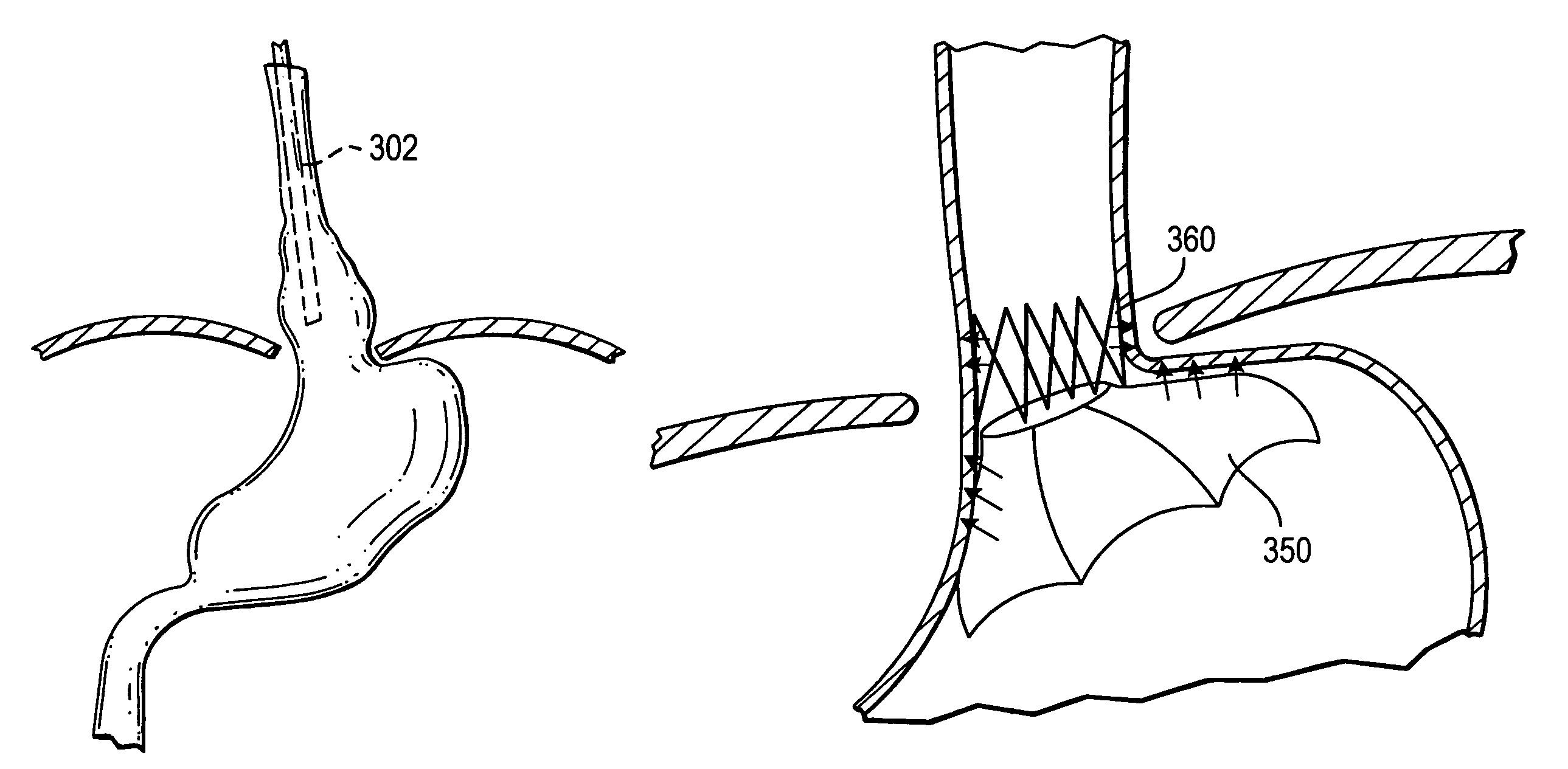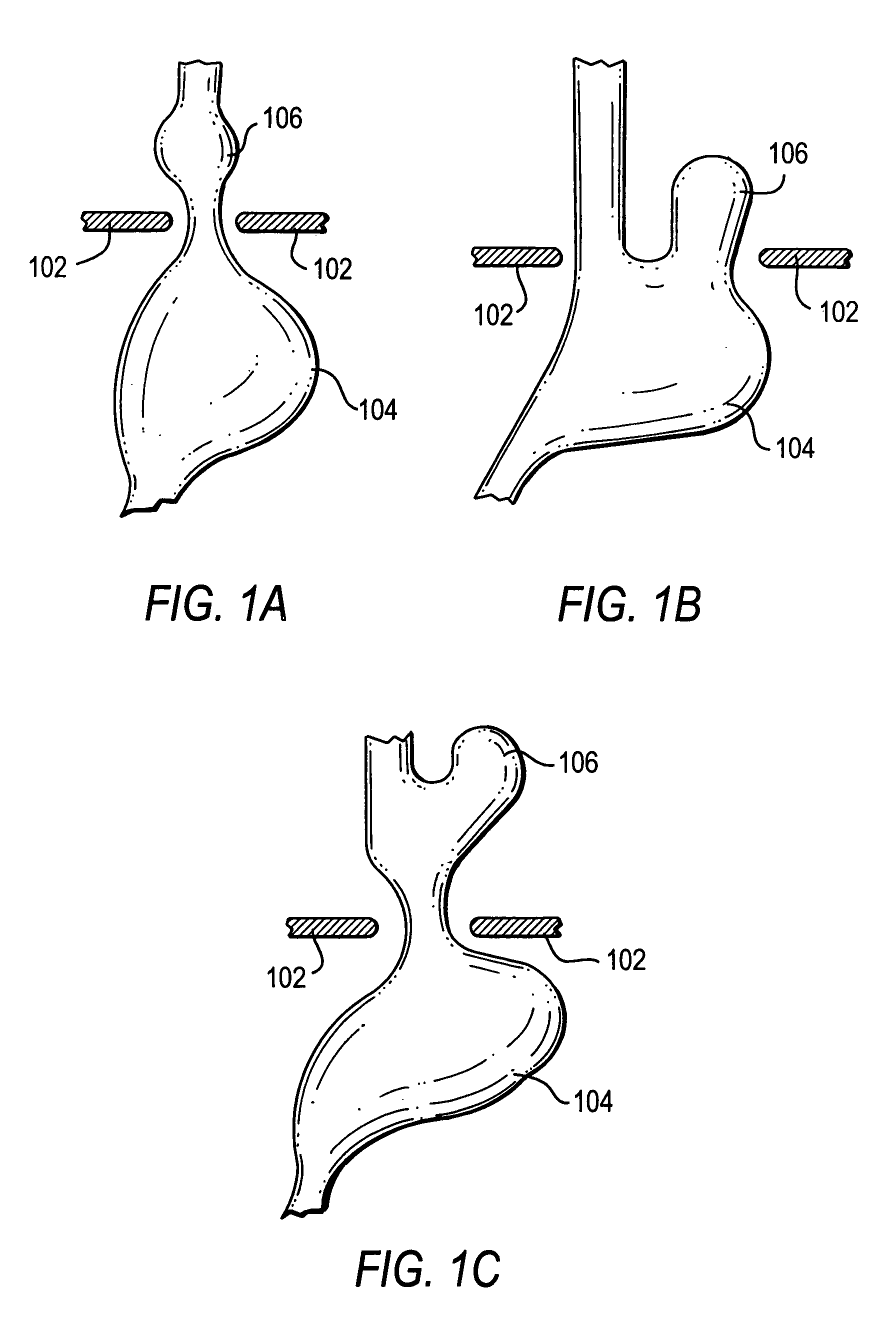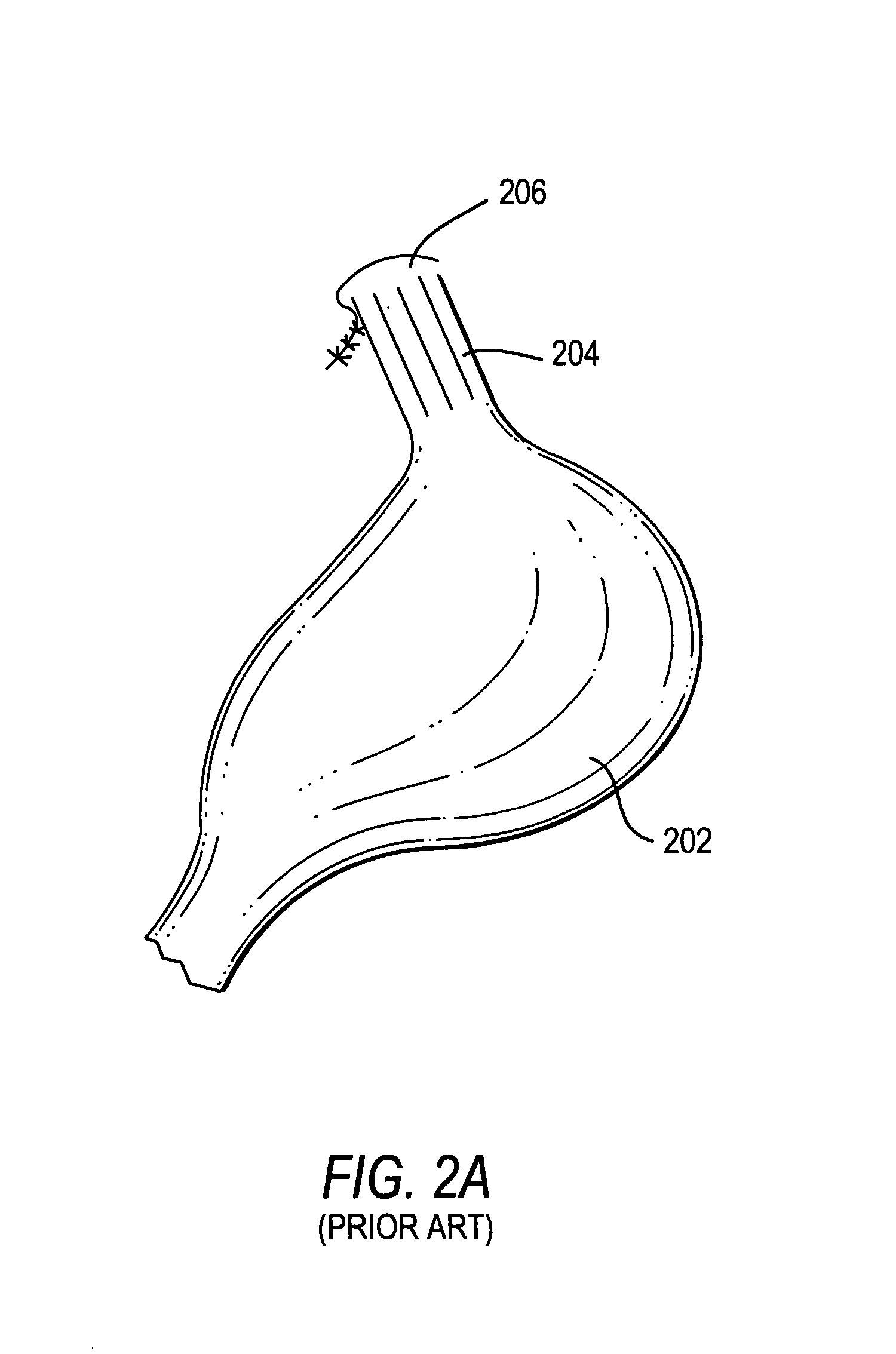Methods and apparatus for improving the function of biological passages
a technology of biological passages and apparatuses, applied in the field of apparatus and methods for improving the function of biological passages, can solve problems such as patients experiencing difficulties in swallowing
- Summary
- Abstract
- Description
- Claims
- Application Information
AI Technical Summary
Benefits of technology
Problems solved by technology
Method used
Image
Examples
Embodiment Construction
[0036]Although hiatal hernias and GERD are not necessarily interrelated, many patients who suffer from GERD also suffer from hiatal hernias. Hiatal hernias can be categorized into three main categories.
[0037]FIGS. 1A–1C show three types of hiatal hernias. An illustrative sliding hiatal hernia is shown in FIG. 1A. Generally, a diaphragm 102 separates a stomach 104 from the esophagus. In a sliding hiatal hernia, the gastro-esophageal junction between the esophagus and stomach 104, that is normally at or below the diaphragm, migrates above the diaphragm into the esophagus. Sliding hiatal hernias are most commonly associated with GERD, however the sliding hiatal hernia is frequently asymptomatic. Sliding hiatal hernias are more likely to occur than other forms of hiatal hernias.
[0038]An illustrative true paraesophageal hiatal hernia is shown in FIG. 1B. In a true paraesophageal hiatal hernia, the gastro-esophageal junction remains below diaphragm 102, however, a portion of the stomach 1...
PUM
 Login to View More
Login to View More Abstract
Description
Claims
Application Information
 Login to View More
Login to View More - R&D
- Intellectual Property
- Life Sciences
- Materials
- Tech Scout
- Unparalleled Data Quality
- Higher Quality Content
- 60% Fewer Hallucinations
Browse by: Latest US Patents, China's latest patents, Technical Efficacy Thesaurus, Application Domain, Technology Topic, Popular Technical Reports.
© 2025 PatSnap. All rights reserved.Legal|Privacy policy|Modern Slavery Act Transparency Statement|Sitemap|About US| Contact US: help@patsnap.com



